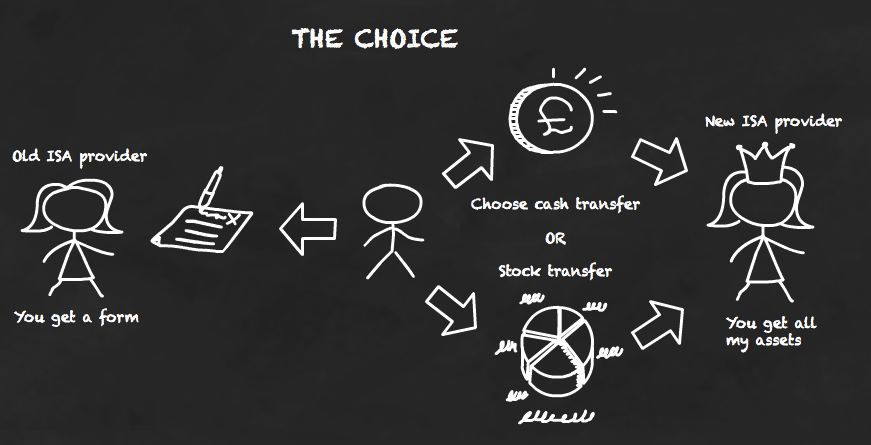A Stocks and Shares ISA is a tax-efficient investment account that allows you to invest in a range of assets, such as stocks, bonds, funds, and ETFs, without paying tax on dividends, capital gains, or income. Here’s a detailed guide to help you understand and get started with a Stocks and Shares ISA.
1. Benefits of a Stocks and Shares ISA
- Tax-Free Growth: No Capital Gains Tax (CGT) on profits.
- Tax-Free Income: Dividends and interest earned are tax-free.
- Flexibility: Invest in a wide range of assets, including individual shares, ETFs, and mutual funds.
- Long-Term Growth: Historically, equities tend to outperform cash savings over time.
- Inheritance Benefits: Your spouse or civil partner can inherit ISA benefits after your death.
2. How It Works
- Annual Allowance: The maximum you can contribute to all your ISAs combined is £20,000 per tax year (2023/24).
- Investments: You can invest in:
- Individual company stocks.
- Exchange-Traded Funds (ETFs).
- Mutual funds or index funds.
- Bonds (corporate and government).
- Investment trusts.
- Providers: Stocks and Shares ISAs are offered by banks, brokers, and investment platforms.
- Fees: Typically, you’ll pay platform fees, fund management fees, and possibly trading fees.
3. Is It Right for You?
A Stocks and Shares ISA may suit you if:
- You want to invest for the medium to long term (at least 5 years).
- You’re comfortable taking some risk with your capital for potentially higher returns.
- You’ve already built an emergency fund (to avoid needing to sell investments in a downturn).
4. Key Features to Compare
When selecting a provider, consider the following:
- Platform Fees:
- Percentage-based (e.g., Vanguard: 0.15%) vs flat fees (e.g., Interactive Investor: £9.99/month).
- Investment Options:
- Range of funds, ETFs, and individual stocks.
- Specialist options like sustainable or thematic funds.
- Ease of Use:
- Beginner-friendly platforms vs advanced tools for experienced investors.
- Trading Costs:
- Some platforms charge per trade (e.g., AJ Bell), while others offer commission-free trades (e.g., Trading 212).
- Customer Support:
- Availability of guidance and advice.
- Flexibility:
- Some ISAs allow flexible withdrawals and re-contributions.
5. Best Stocks and Shares ISA Providers
Here’s a comparison of popular providers:

Vanguard
- Best for: Low-cost index investing.
- Fees: 0.15% annual fee + fund fees (~0.1%-0.2%).
- Investment Range: Vanguard funds and ETFs.
- Minimum Investment: £500 lump sum or £100/month.
- Ease of Use: Great for beginners.
Hargreaves Lansdown
- Best for: Wide investment choices and research tools.
- Fees: 0.45% annual fee (on portfolios up to £250,000) + trading fees.
- Investment Range: Extensive, including stocks, ETFs, funds, and investment trusts.
- Minimum Investment: £100 lump sum or £25/month.
AJ Bell Youinvest
- Best for: Cost-conscious investors seeking a broad range.
- Fees: 0.25% annual fee + trading fees (£1.50 for funds, £9.95 for shares).
- Investment Range: Stocks, ETFs, funds, and bonds.
- Minimum Investment: £25/month.
Trading 212
- Best for: Commission-free investing.
- Fees: Free ISA account, but some ETFs may have indirect charges.
- Investment Range: Stocks, ETFs, and fractional shares.
- Ease of Use: Mobile-first design.
Interactive Investor (ii)
- Best for: Larger portfolios with flat fees.
- Fees: £9.99/month flat fee (includes one free trade).
- Investment Range: Extensive options, including global stocks and funds.
- Ease of Use: Advanced tools for experienced investors.
6. Example Investment Portfolio
Here’s how you might allocate investments in a Stocks and Shares ISA:
Balanced Portfolio (Medium Risk, Long-Term Growth)
| Asset Class | Allocation (%) | Example Investments |
|---|---|---|
| Global Equities | 50% | Vanguard FTSE All-World ETF (VWRL). |
| U.S. Equities | 20% | iShares S&P 500 ETF (IUSA). |
| Emerging Markets | 10% | iShares MSCI Emerging Markets ETF (EMIM). |
| Bonds | 15% | iShares Core Global Aggregate Bond ETF (AGGH). |
| Real Estate/REITs | 5% | Vanguard Global REIT ETF (VNQ). |
Growth Portfolio (Higher Risk, Higher Potential Returns)
| Asset Class | Allocation (%) | Example Investments |
|---|---|---|
| Tech & Innovation | 30% | ARK Innovation ETF (ARKK), Nvidia (NVDA). |
| Global Equities | 30% | Vanguard FTSE All-World ETF (VWRL). |
| Emerging Markets | 20% | iShares MSCI Emerging Markets ETF (EMIM). |
| Sustainable Funds | 10% | iShares Clean Energy ETF (ICLN). |
| Crypto | 10% | Bitcoin (BTC), Ethereum (ETH) (if allowed). |
7. Steps to Open a Stocks and Shares ISA
- Choose a Provider: Based on your investment goals, fees, and ease of use.
- Open an Account:
- Provide personal details and your National Insurance Number.
- Fund Your ISA:
- Deposit a lump sum or set up regular contributions.
- Select Investments:
- Build your portfolio with ETFs, funds, or individual stocks.
- Monitor and Adjust:
- Rebalance periodically to maintain your desired asset allocation.
8. Key Rules
- One Provider Per Year:
- You can only open and contribute to one Stocks and Shares ISA per tax year.
- Transfers:
- You can transfer ISAs between providers to get better fees or options.
- No Loss of Allowance:
- ISA transfers don’t count as withdrawals, so your tax benefits are preserved.
Would you like help?
- Designing a personalized ISA portfolio?
- Understanding how to transfer existing investments into a Stocks and Shares ISA?







